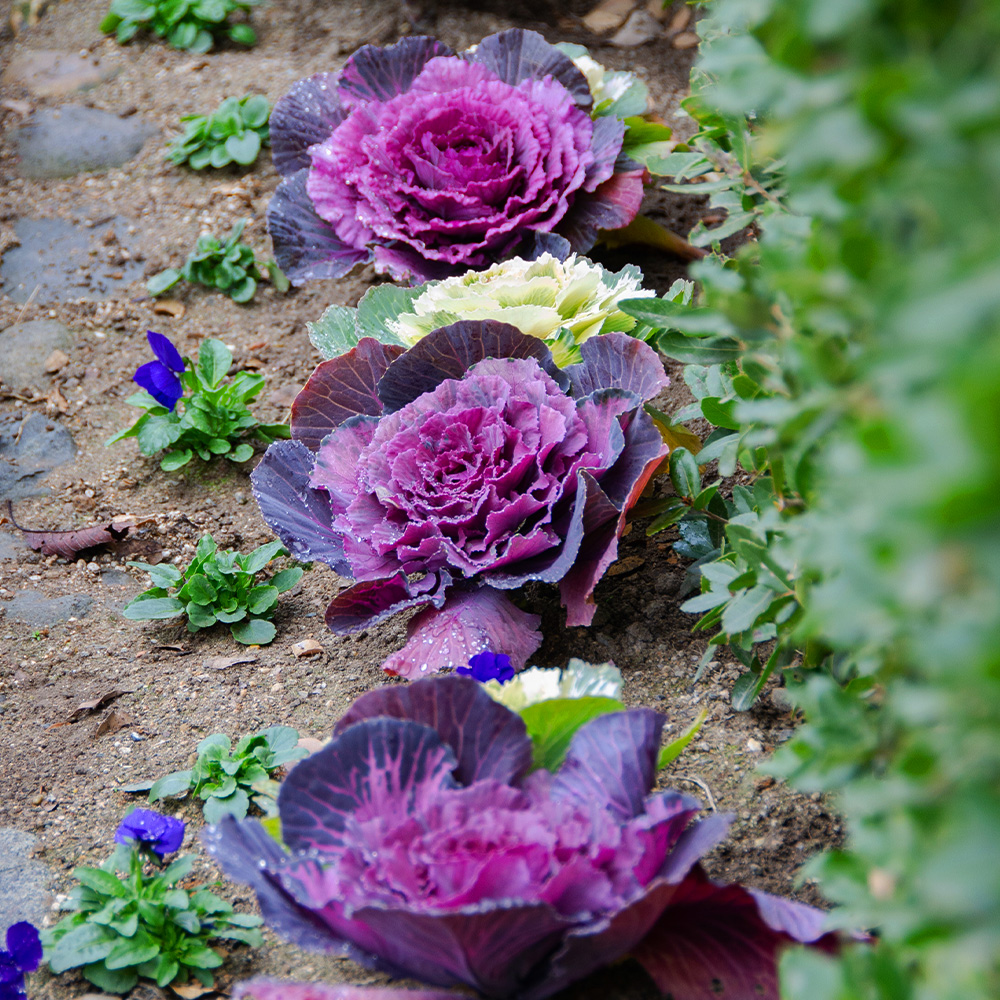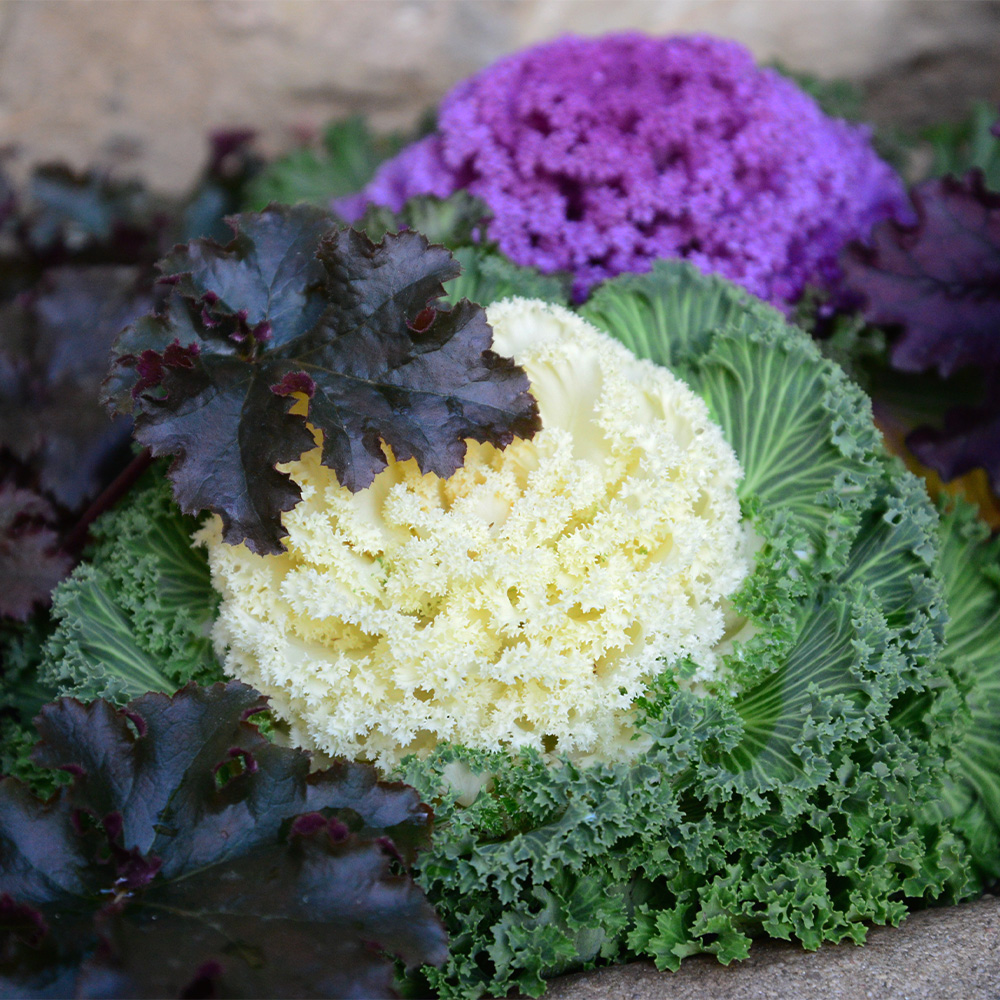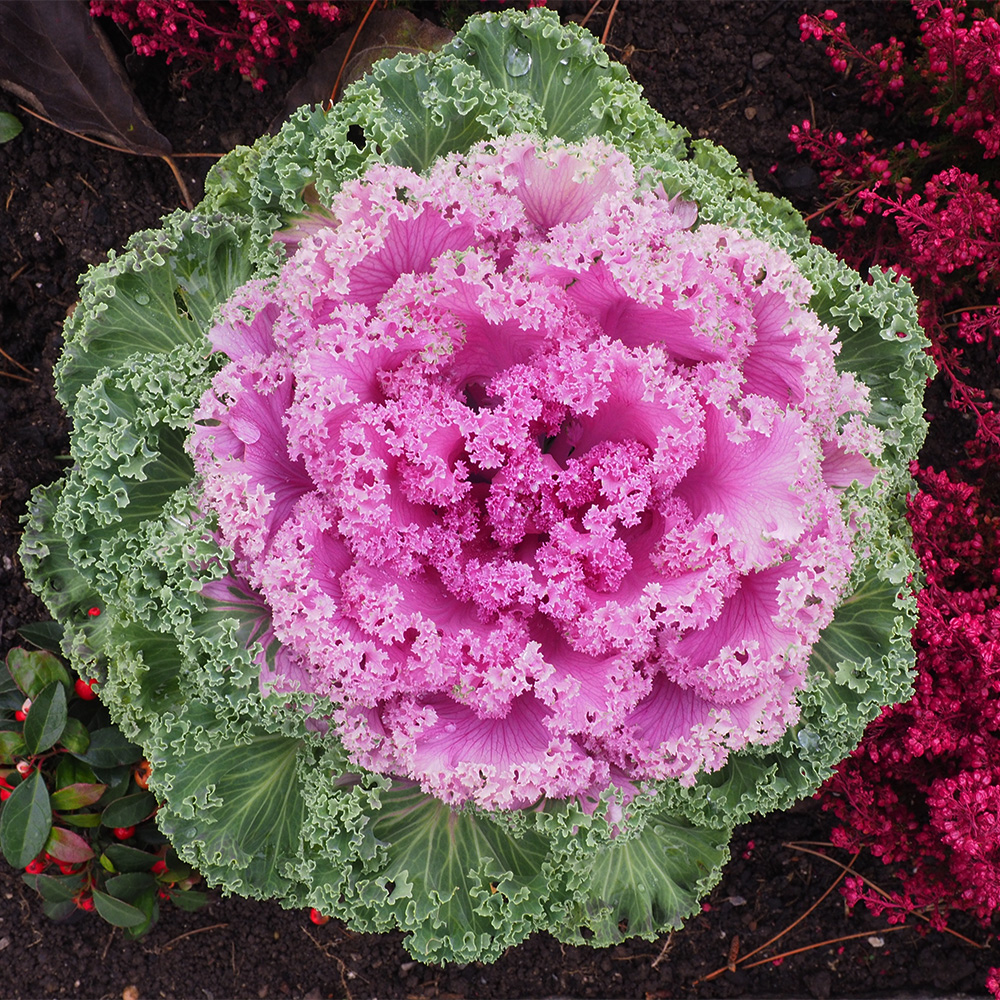Looking to add extra appeal to the fall and winter landscape? This year, try ornamental cabbage and kale! Planted alongside chrysanthemums and winter pansies, ornamental cabbage and kale add distinctive bold texture and vibrant seasonal color to the late-season landscape.
Foliage not Flower
Frequently called ‘flowering’ cabbage & kale, these fall favorites are not flowers at all, but large, dense rosettes of colorful, frilly foliage richly variegated with cream, white, green, pink, rose, and purple – the perfect fall palette.
- Kale leaves are frilly-edged and sometimes deeply cut or lobed.
- Cabbage leaves tend to have a smoother appearance with a wavy leaf edge.
While the typical large ornamental cabbage and kale varieties are readily available at this time of year, you can also try more unusual options, including dwarf varieties, suitable for planters, and upright, tall, long-stemmed varieties that are useful in fall floral arrangements.
Unlike most other fall ornamentals, these cold-tolerant annuals improve in appearance after a frost or two, bringing out more intense and brilliant colors in their foliage – perfect for use as both an autumn accent plant mixed with other fall favorites or as a specimen plant, commanding all the attention. Initially select your ornamental cabbage and kale for the leaf texture as the true leaf color will not be recognized until after temperatures have cooled down quite a bit.
Our favorite tried and true varieties include:
Cabbages
- Color Up
Grows upright with green leaves surrounding a center of white, pink, or magenta.
- Osaka Cabbage
A compact plant with large, smooth, wavy leaves boasting a center of white, pink, or jewel-toned purple.
Kales
- Crane
When grown close together, Crane is a tall variety, perfect for cutting and using in floral arrangements.
- Peacock
This extra fancy variety sports deeply cut, frilly, loose leaves in purple, magenta, and white.
Planting
Popular in fall borders, grouped in planting drifts, or planted in containers for the deck or patio, ornamental cabbage and kale typically grow to 12-18” high and wide, depending on the cultivar. Plant these fall jewels in September and early October, at least 12” apart, depending on the variety, in an area with full sun that has rich, moist, well-drained soil.
- In Ground
If planting in the ground, add a shovel full of compost to each planting hole to enrich the native soil. Also, sprinkle in a small handful of starter fertilizer to get your cabbage and kale off to a healthy start.
- In Containers
When planting in pots, planters, urns, and window boxes, it is best to plant using lightweight, nutritious potting soil. Don’t forget the fertilizer! A slow-release fertilizer will feed your plants, with no additional effort, all season long.
Cabbage and Kale Tip
While these plants are quite similar to the cabbage and kale cooked in the kitchen and consumed in salads, soups, and stews, it is important to note that ornamental varieties are cultivated for color and shape rather than taste. If you’d like to use them in the kitchen, use them as a garnish only. They are more attractive than tasty, and their proper place is in the garden.
Enjoy your ornamental cabbage and kale during the cold months of the year as once they begin to bolt in the spring, sending up their flower stalks, it is time to pull them up and replace them with late spring and summer flowering annuals. This fall, however, try several new varieties planted in both containers and directly into the garden. You’ll love the long-lasting color that they’ll bring to your surroundings.




